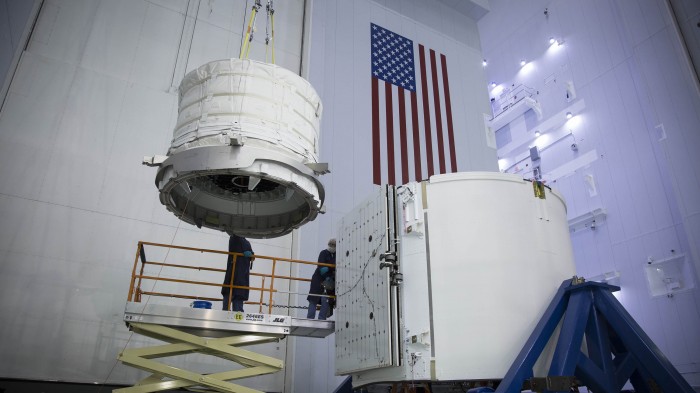Inflatable Spacecraft Launches, Falcon 9 Successfully Returns to Earth
Solutions for making space travel cheaper and safer keep coming from the private sector. SpaceX and more recently Jeff Bezos’s Blue Origin showed they can make reliable, reusable rockets. And today NASA helped another company into the private spaceflight game, launching an experimental inflatable space capsule that will be attached to the International Space Station.
The capsule, called BEAM, for Bigelow expandable activity module, was built by Bigelow Aerospace of Las Vegas. It could help reduce the mass of interplanetary voyagers, and aims to reduce the radiation exposure faced by astronauts, a key problem that needs to be solved if dreams of sending a manned voyage to Mars are to be realized.
The capsule—about four meters long and three meters in diameter when inflated—is made of a proprietary flexible fabric that the company says can provide better protection from radiation and space debris than the metal parts of the ISS can. Its two-year maiden voyage will be a critical test of that claim. If successful, it opens the door for sending more such modules into space, and strengthens the argument for Bigelow’s technology to be used on a mission to Mars.

The successful launch today marks a first for inflatable spacecraft, but it was also an important first for SpaceX. The company managed to safely land its Falcon 9 rocket on an unmanned ship in the Atlantic Ocean, a major step toward reusing its launch vehicles on subsequent missions and lowering the cost of spaceflight.
(Read more: “10 Breakthrough Technologies: Reusable Rockets,” “The Deferred Dreams of Mars”)
Keep Reading
Most Popular
Large language models can do jaw-dropping things. But nobody knows exactly why.
And that's a problem. Figuring it out is one of the biggest scientific puzzles of our time and a crucial step towards controlling more powerful future models.
How scientists traced a mysterious covid case back to six toilets
When wastewater surveillance turns into a hunt for a single infected individual, the ethics get tricky.
The problem with plug-in hybrids? Their drivers.
Plug-in hybrids are often sold as a transition to EVs, but new data from Europe shows we’re still underestimating the emissions they produce.
Stay connected
Get the latest updates from
MIT Technology Review
Discover special offers, top stories, upcoming events, and more.